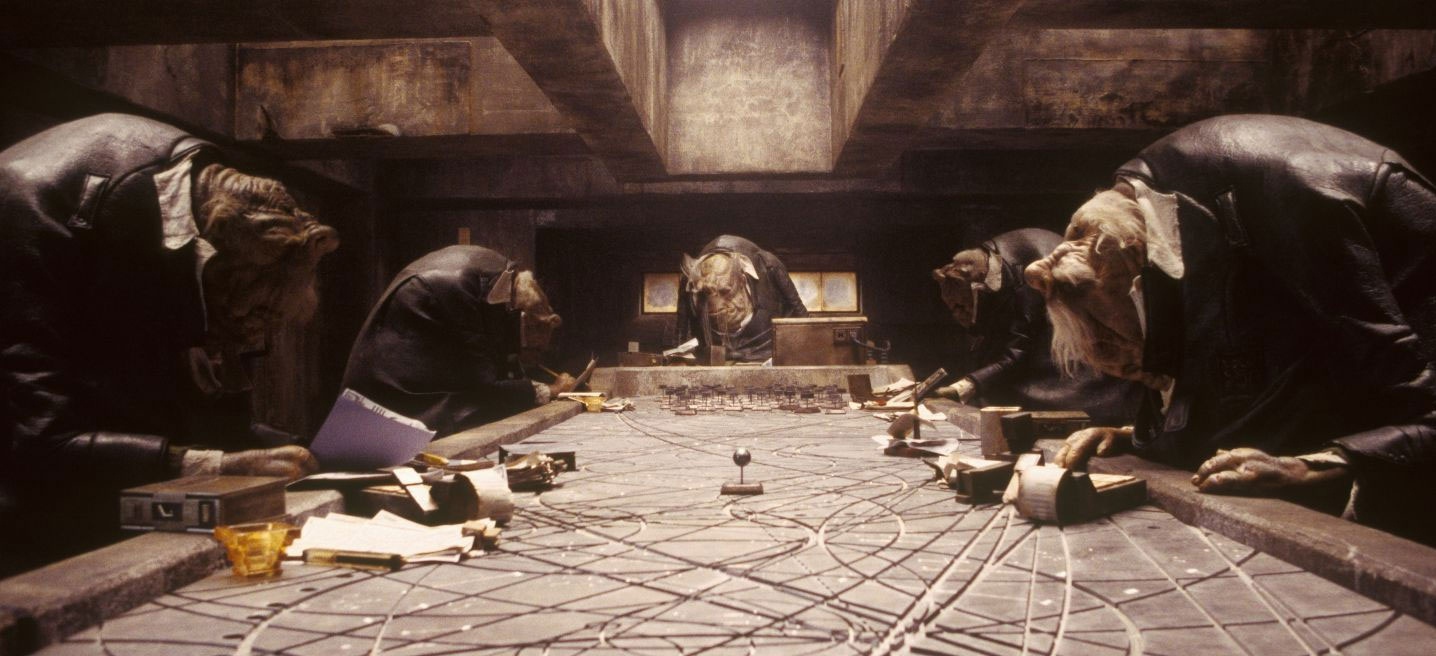If you want to read the submissions on the discussion paper that could shape the next 10 years of primary care, so do we …
When, in The Hitchhikers Guide to the Galaxy, the Galactic Hyperspace Planning Council announces that it is building a hyperspatial express route through our solar system, and that, regrettably, Earth is in the way and scheduled for demolition in two minutes, the intergalactic public servant in charge snaps at our objections with:
“There’s no point in acting surprised about it.
“All the planning charts and demolition orders have been on display at your local planning department in Alpha Centauri for 50 of your Earth years, so you’ve had plenty of time to lodge any formal complaint and it’s far too late to start making a fuss about it now.
“What do you mean you’ve never been to Alpha Centauri? Oh, for heaven’s sake, mankind, it’s only four light years away, you know. I’m sorry, but if you can’t be bothered to take an interest in local affairs, that’s your own lookout.
“Energise the demolition beams.”
This scene from The Hitchhikers Guide came immediately to our editor this week as we were discussing some of the stranger goings-on around the process of distribution, timing for review, submission dates and ultimately the restrictions placed around access to submissions on the Draft Recommendations from the Steering Group of Primary Healthcare Reform, a 10 Year Plan for Primary Care.
Would you like to know what 170 separate parties, including medical colleges, state government health departments, federal government agencies, hospital groups, various professional bodies, stakeholder and advocacy organisations, researchers and individuals think about your future?
So would we.
When we asked to look at the submissions, we were told they were all being treated as confidential by the department. This is unusual.
Even the identity of the parties that made submissions could not be revealed.
We were told that 170 parties had made a submission, some others had asked for more time to submit, and that if we liked, we could try to work out who submitted and ask them individually if they were OK to reveal their submission to us, and the public.
We are hard at work at that job now. It’s quite a bit of work, but we think it will be worthwhile for everyone.
There are some very obvious parties, some of whom who have already revealed themselves and are very happy for their submission to be scrutinised by the general public, and which we are happy to confirm includes that subset of individuals knowns as GPs.
The RACGP has released its submission. ACRRM hasn’t finished its submission yet, but is hard at it, and we’ll bring you that when we can.
(What it could tell us today was that the rural workforce shortage outweighs any other issue: “The overwhelming message across all our membership was the urgency of the situation with respect to rural workforce shortages and the poor value proposition for rural practice. For our members these two related issues overwhelmed all other considerations. They need to be addressed as a matter of urgency irrespective of the long-term reforms. You can’t reform workforces that aren’t there.”)
It’s not entirely surprising that ACRRM hasn’t had enough time, given it was only released a month ago and the deadline for submissions was Tuesday.
The paper was originally intended to be released in September 2020, so some probably gave up waiting if they were looking.
We contacted quite a few organisations who still weren’t aware the paper was out for comment.
The 170 parties who were informed and had their act together don’t include at least two state health departments, whose comms people asked what we were talking about. (Yes, they’re all about hospitals, but they surely aren’t completely un/disinterested in primary care.)
The process by which it was distributed, and to whom, and why the secret squirrel, remain a mystery. We’ve asked the DoH to enlighten us.
There wasn’t much promotion of it that we can find.
Croakey, the public interest health journalism group, got a copy in its email inbox, but was surprised it turned up, and wondered out loud in one article it wrote on the paper whether “discussion participants will be limited to those on some government email list?”.
One group we contacted said it had made a submission, was perfectly happy to release it publicly, but since the department was treating it confidentially wanted to check with the department to see if it was OK for it to release its own submission to us.
Needless to say, this group was a federally funded agency with a line into the Department of Health for funding at some point.
We are waiting for its response but given the circular nature of its problem – it doesn’t mind it being public, the DoH doesn’t mind submissions being public so long as the group in question doesn’t mind, but the group reports to the DoH, who might mind in the end – we aren’t holding our breath.
So, we have a discussion paper released on the future of what most industry analysts would agree is the most important, most put-upon and soon to be most disrupted group of healthcare professionals in the country, as far as the future viability of our healthcare system goes, and:
- Most of the participants in that group, GPs (and the major medical media groups as far as we can tell), weren’t aware the paper was in the public domain until it was too late to do anything, or still aren’t aware
- Only select media outlets seemed to be informed that the paper was in the public domain (we weren’t, and we can’t see anything about it in our favourite cousin Australian Doctor, though its release would have been big news for both of us)
- Those special groups that did get a look in, presumably by being on some exclusive list held by the DoH, got only a few weeks to get organised to provide comment
- A lot of groups either missed out on commenting, or didn’t get enough time and had to request an extension
- On the last day you could submit, it was revealed by the DoH that not only would all the submissions not be made available to the public (GPs included) but not even the names of those submitting would be made available. Anyone interested in what groups made a submission and what they said has to guess who submitted and then ask them directly if they are OK to release their submission.
- It was actually due to be released in September 2020, and was delayed, according to the department, because of covid: OK, a lot has been happening for the department because of covid, but if you’re going to delay something that long, at least give it a bit longer than less than one month before anyone can comment on it, especially when you look like you did your best to not let anyone know it was out for viewing and submissions.
Even given the restricted access to the paper before submissions closed, the department received 170 submissions, which we guess means that most of those who got an email from the department went to the trouble of stopping other work and got a submission done in time.
One hundred and seventy is a lot of submissions for a discussion paper like this, although you suspect if it was more widely publicised and circulated, the department would probably have received a multiple of this number.
That the DoH received 170 despite what appears to be some effort to restrict the number it got should be saying something to the department.
The discussion paper, which you can read here, has already come in for some criticism for being very high level and vague.
Writing in Croakey, healthcare reform and policy expert Dr Lesley Russell said
that the paper’s recommendations “contribute little new to the reform discussion”.
“The Steering Group might as well have made a few minor updates to the 2009 National Primary Health Care Strategy Report, which covers the same topics and delivers pretty much the same recommendations,” she said.
“Absent brave leadership and concerted action from all stakeholders – not seen in 2009 nor in the years since – this report is unlikely to deliver the primary care system Australia needs and Australians deserve.”
Ouch.
Although, in large part, the college supported all of the draft recommendations, the RACGP’s response to the paper also touched on how fluffy and high-level some of the –recommendations seem to be, frequently making the observation that there was not enough detail around implementation to make an informed assessment of several recommendations.
That the college also submitted a long list of items (11 of them) it thought the paper wasn’t addressing in the reform probably reflects, in a polite way, that the college doesn’t think the paper was hitting the mark in the manner required for such an important document.
You can (you probably should – although my old editor, Dr Kerri Parnell, strictly forbade me from ever saying the word “should” to GPs ) read the full assessment of the RACGP here.
And we are going to seek out as many of those 170 as we can, and ask them if they are OK to publish, so we can to give you as broad a view of the wider world of health sector interests in this most important of topics, the future of general practice, as we can.
I, for one, am fascinated to see what some of the state and territory government departments have to say about the future of general practice given the current serious disconnects between the tertiary and primary care sectors.
Surely this is one of the most important projects being undertaken by the Department of Health in the next year or so, and it should be as widely publicised and commented on as it can be.
If we’re going to put an intergalactic expressway through the general practice sector, let’s be sure that we all get more than two minutes’ notice before the bulldozers and developers move in.
If you’re one of the 170, and agree to have your submission made public and reported on, you can contact us by emailing our editor, Penny Durham, at penny@medicalrepublic.com.au.
Any other comments or views on this process are welcome.




